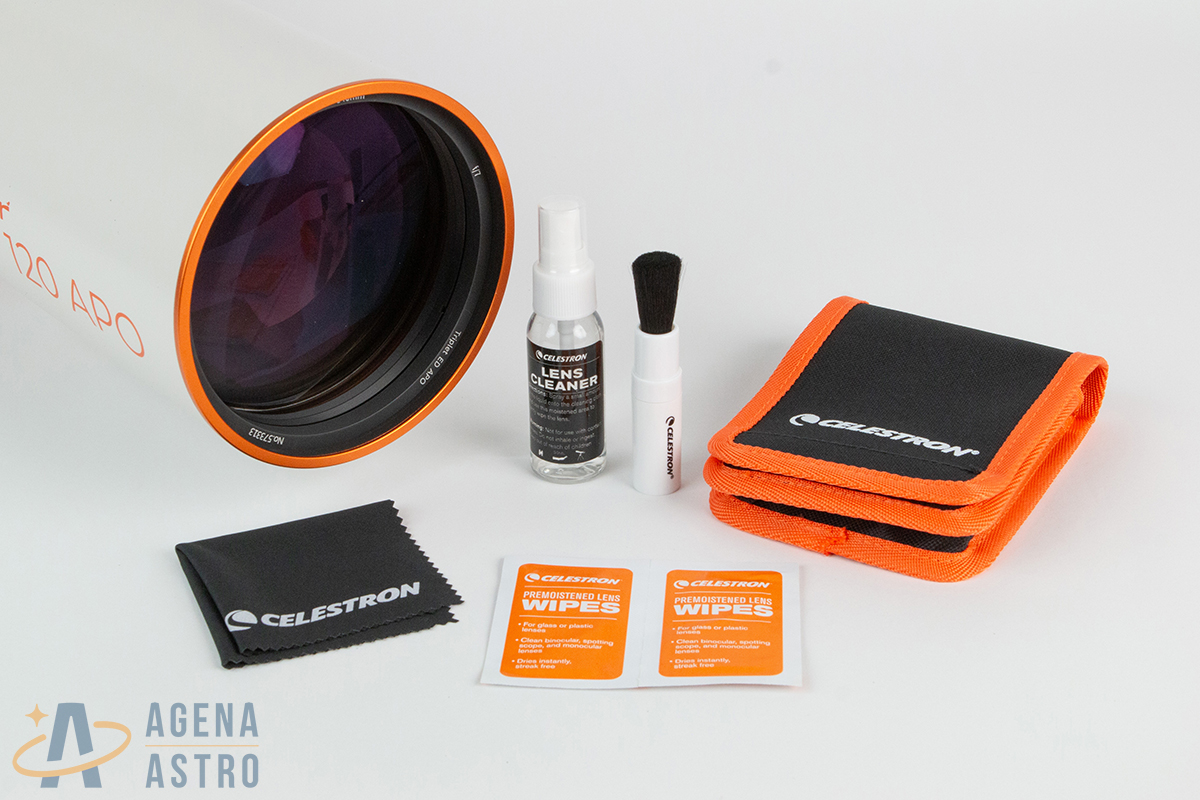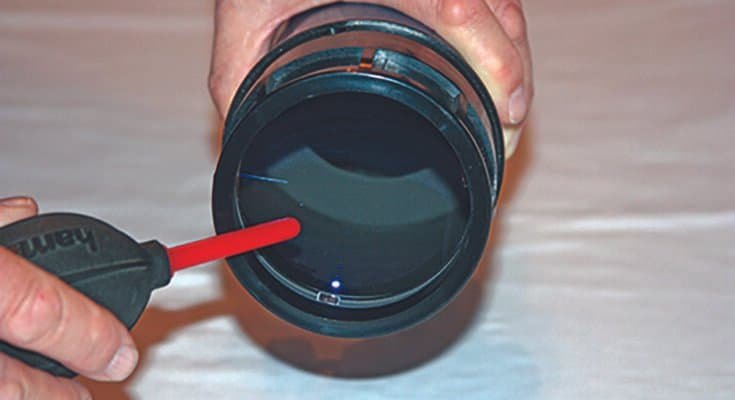If you own a refracting telescope, you know how important a clear lens is for sharp, stunning views of the night sky. But cleaning your telescope lens can feel tricky and nerve-wracking.
You might worry about scratching it or making the problem worse. What if you could learn simple, safe steps to clean your lens like a pro? You’ll discover exactly how to care for your telescope lens so you get the best images every time you look up.
Keep reading—your perfect view is just a few easy steps away.

Prepare Cleaning Materials
Preparing the right materials makes cleaning your refracting telescope lens safe and effective. Using proper tools protects the delicate glass from scratches and damage. Gather everything before starting to avoid interruptions during cleaning. This helps keep the lens clean and your telescope in top condition.
Gather Soft Cloths And Brushes
Use soft, lint-free cloths for wiping the lens gently. Microfiber cloths work best because they trap dust and dirt without scratching. Choose small, soft brushes to remove loose dust before wiping. A camel hair brush or a lens brush is ideal. Avoid rough fabrics that can damage the lens surface.
Choose The Right Cleaning Solution
Pick a cleaning solution made for optical lenses. Distilled water mixed with a small drop of mild dish soap works well. Use only a few drops to avoid residue. You can also buy lens cleaning fluids at camera or telescope stores. These solutions clean without harming lens coatings.
Avoid Harmful Chemicals
Never use household cleaners, alcohol, or ammonia on the lens. These chemicals can damage the lens coating and cause permanent marks. Avoid sprays that contain harsh solvents. Stick to gentle solutions designed for optics. Protecting the lens coating keeps your telescope clear and sharp.

Inspect The Lens
Inspecting the lens is the first step to clean your refracting telescope properly. This step helps you see what kind of cleaning your lens needs. Careful inspection prevents damage during cleaning. Take your time and observe the lens closely.
Check For Dust And Debris
Look at the lens under bright light. Small dust particles and debris can affect your view. Use a soft brush or air blower to remove loose dust gently. Avoid touching the lens with your fingers at this stage. Dust can scratch the glass if rubbed.
Identify Smudges And Stains
Smudges appear as oily or blurry spots on the lens. Stains may come from fingerprints or moisture. These marks need careful cleaning with a special lens cloth. Do not use regular tissues or cloths. They can leave scratches or lint behind.
Remove Loose Particles
Removing loose particles from your refracting telescope lens is the first step in cleaning. Dust and small debris can scratch the lens if rubbed. Taking care to remove these particles gently protects your lens surface. This step keeps your telescope clear and ready for sharp views.
Use A Soft Brush
Choose a soft brush made for optics or a clean, fine paintbrush. Lightly sweep the lens surface to lift dust and dirt. Avoid pressing hard; gentle strokes work best. This method removes particles without damaging the lens coating. Keep the brush clean to prevent adding new dirt.
Apply Gentle Air Blowing
Use a hand blower or a can of compressed air designed for cameras. Blow air softly across the lens to push away loose particles. Hold the can upright to avoid spraying liquid. Do not blow with your mouth; saliva can harm the lens. This step reaches places brushes cannot touch.
Clean The Lens Surface
Cleaning the lens surface of your refracting telescope is important. Dust, dirt, and smudges can blur your view of the stars. A clean lens helps you see clearer and enjoy your telescope more. Be gentle and careful during cleaning to avoid damage.
Use the right tools and methods for the best results. Below are simple steps to clean the lens surface properly.
Apply Cleaning Solution Correctly
Use a cleaning solution made for optical lenses. Do not use household cleaners or alcohol. Put a few drops of solution on a clean, soft cloth. Avoid putting liquid directly on the lens to prevent damage. Lightly moisten the cloth to avoid excess wetness.
Use Circular Motion With Cloth
Wipe the lens surface gently using the moistened cloth. Move your hand in small circles. Start from the center and move outward. This helps remove dirt without scratching the lens. Keep the pressure light to protect the coating on the glass.
Dry And Polish The Lens
Drying and polishing your refracting telescope lens is a delicate process. It removes any moisture and small particles left after cleaning. Doing it right keeps your lens clear and scratch-free. This step helps maintain sharp, bright views through your telescope.
Use A Dry Microfiber Cloth
Choose a clean, dry microfiber cloth for drying. It is soft and gentle on the lens surface. Avoid rough fabrics that can cause damage. Gently pat the lens instead of rubbing hard. Light, careful touches remove water without scratching.
Avoid Scratches During Drying
Do not press too hard on the lens. Move the cloth in small circles slowly. Check the cloth for dust or grit before use. Even tiny particles can scratch the glass. Replace the cloth if it looks dirty or worn out.

Maintain Lens Cleanliness
Keeping your refracting telescope lens clean is very important. Dirt, dust, and smudges can blur your view of the stars. Proper care helps the lens last longer and work better. Simple habits protect your lens and improve your stargazing experience.
Store Telescope Properly
Always store your telescope in a dry, dust-free place. Use a protective cover or case to keep dirt away. Avoid places with high humidity to stop mold growth on the lens. Keep the telescope upright to prevent dust from settling on the lens. Proper storage reduces the need for frequent cleaning.
Regular Cleaning Schedule
Set a cleaning routine based on how often you use your telescope. Lightly dust the lens with a soft brush or air blower after each use. Avoid wiping the lens too often to prevent scratches. Clean the lens with lens cleaner and a microfiber cloth only when needed. Regular care keeps the lens clear and sharp.
Frequently Asked Questions
How Often Should I Clean My Refracting Telescope Lens?
Clean your refracting telescope lens only when necessary. Frequent cleaning can damage coatings. Inspect the lens regularly and clean it if dust or smudges affect image quality.
What Materials Are Safe To Clean Telescope Lenses?
Use a soft microfiber cloth, lens cleaning solution, and a blower brush. Avoid paper towels, tissues, or household cleaners as they can scratch or damage the lens.
Can I Use Household Cleaners On Telescope Lenses?
No, household cleaners contain harsh chemicals that can damage lens coatings. Always use specialized lens cleaning solutions designed for optical lenses to maintain clarity and protect the lens surface.
How Do I Remove Stubborn Smudges From The Lens?
Apply a few drops of lens cleaning solution to a microfiber cloth. Gently wipe the lens in a circular motion. Avoid pressing too hard to prevent scratches.
Conclusion
Cleaning a refracting telescope lens keeps your view clear and bright. Use soft cloths and gentle cleaners only. Avoid harsh scrubbing to protect the lens surface. Regular care helps your telescope last longer. Clean lenses mean better star and planet views.
Take your time and be gentle during cleaning. Your telescope will thank you with sharper images. Simple steps make a big difference in your experience. Keep your lens spotless and enjoy the night sky fully.



